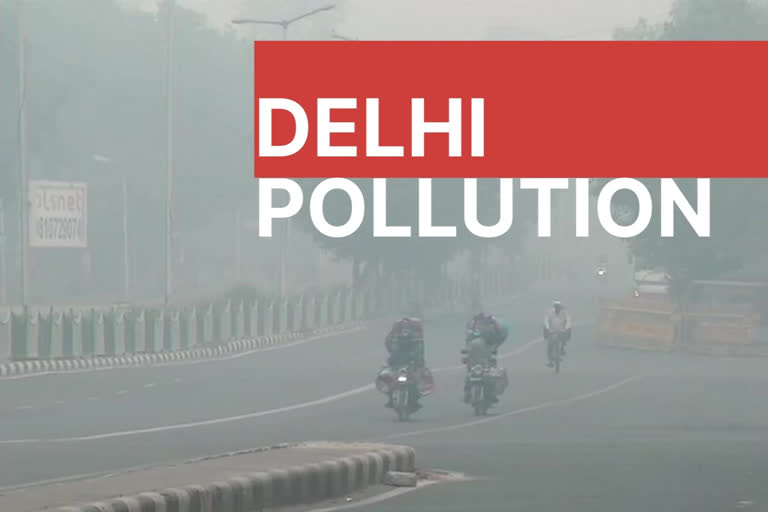New Delhi: At times when schools in Delhi-NCR are shut for two days due to the air pollution, some poor children on the streets are forced to breathe the toxic air as they struggle hard to sell their goods at the traffic signals to sustain their daily bread.
The vendors are not even provided with masks to tackle the toxic air. The government has also been reluctant to address their plight.
"On Thursday, the Air Quality Index (AQI) docked at 472 with particulate matter (PM) 2.5 levels at 322 and PM 10 levels at 487 at 8:30 in the morning, said System of Air Quality and Weather Forecasting And Research (SAFAR).
An AQI between 201 and 300 is considered 'poor', 301-400 'very poor' and 401-500 'severe'. An AQI above 500 falls in the 'severe plus' category. As air pollution levels are nearing 'severe plus category', schools in Noida, Ghaziabad and Delhi have been shut for two days, hours after the apex court-mandated anti-pollution authority EPCA that they should be closed as pollution in the region hovered close to 'emergency' levels.
Air quality in Ghaziabad and Noida remains in 'Severe' category; schools in Ghaziabad and Noida are closed due to rising pollution levels.
Children and infants are more susceptible than adults to air pollution as they still developing and their respiratory tracks are more permeable. According to the UNICEF study, 2016, 'Clean the air for children', around 300 million children around the world currently live in areas where the air is toxic - exceeding international limits by at least six times.
Using satellite imagery of outdoor air pollution, this study found that around 300 million children currently live in areas where outdoor air pollution exceeds international guidelines by at least six times.
The study said in total, around 2 billion children live in areas that exceed the World Health Organisation annual limit of 10 mg/m3 (the number of micrograms of ultra-fine particulate matter per cubic metre of air that constitutes a long term hazard).
A similar situation prevailed in Gurugram, as the residents were left gasping for breath. The Air Quality Index (AQI) was pegged at 703, which falls under the 'severe plus' category. Isolated pockets of the region were covered by a thick blanket of smog due to the spike in the pollutants in the air.
The smog cover has also reduced the visibility at the major junctions of the city in the wee hours. The commuters were only able to see till 100-150 meters of the road while driving.
People residing in Gurugram complained of breathlessness and allergic reactions due to the toxic air.
According to the India Meteorological Department, fog and mist cover is very likely over the region for the next three days.



